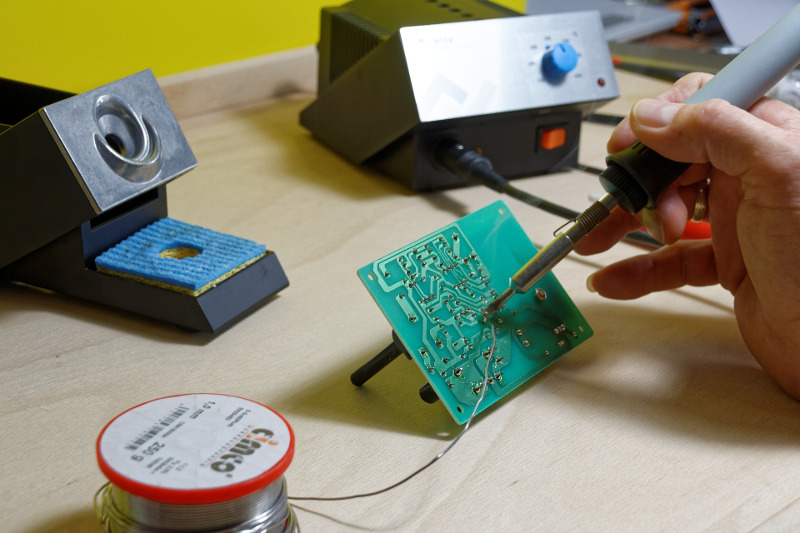Choosing the Right Solder Alloy and Flux
Soldering is a metal to metal joining technique similar to welding that uses a heat source and a type of metal alloy with low melting temperature called solder. Solder is used on metals that are less susceptible to being fused such as copper, brass, silver, etc.
Choosing the Right Solder
Solder alloy composition is important when choosing the right solder for the metal to metal joint. Choosing an alloy with similar conductive and strength material properties as the base metal will reduce the need to compensate for a weak joint. As technology changes and environmental and health regulations direct industry standards, solder has moved further away from a lead base.
1. What is the maximum temperature the assembly can be exposed to and what is the maximum working temperature of the assembly?
Solder generally has a lower melting temperature or temperature range than the base material of the assembly to be soldered. Therefore, you can limit your solder choices to those that can be applied without harming your assembly during the soldering process and that will not melt if the assembly reaches its maximum working temperature.
Temperature charts such as this “Kester Alloy Temperature Chart” (PDF) can be helpful in the choosing process. Note some alloys have a melting range that will affect how well the solder flows.
2. What is the direct application of the solder?
Different solder is used for different applications – electronics and circuit board assemblies, plumbing pipes, drinking water and clean piping, drain lines, etc. In each case, corrosion and health/environmental standards should be considered.
Rosin Core – Rosin flux core wire is used for electronics assemblies to improve metal flow and conductivity of the joints. Rosin is used in place of acid core wire on electronics to reduce corrosion.
Acid Core – Acid flux core wire is typically used for plumbing and repair of general use and ‘dirty’ assemblies.
Solid – Lead based solder and lead free solid wire is used for piping and drain lines but should be chosen based on the application. Lead based solder should not be used in a clean piping assembly especially if it is used for drinking water.
3. Is there a lead free requirement?
Lead based solder alloys will generally flow more quickly at lower temperatures when compared with tin based solder alloys. RoHS regulations restrict most lead based alloys in large quantities to be used in products being sold to RoHS countries. Lead free solder has become more popular and have moved toward tin-copper, tin-silver, and tin-antimony alloys.
In some cases, lead free solder alloys cannot be used due to the temperature requirements. There are exemptions to the RoHS rules, but in all cases, the government specification, customer, or RoHS compliance guide shall be consulted.
Choosing the Right Flux
Melted solder is attracted to metal but will not stick easily to metal with oils and oxidization. Flux melts at lower temperatures than solder alloys and is used to coat the area to be soldered and guarantee a clean joint. Flux helps draw solder into a joint and makes it easier to create a capillary action.
Flux will be application dependent, but the general purpose of flux stands:
Rosin based flux – Rosin flux is slightly acidic when molten (able to dissolve surface oxides without etching the base material) and noncorrosive at room temperature. Pure rosin flux is often mixed with additives to changes the acidic, melting temperature, and solubility properties. Pure rosin flux is used often for electronics soldering because it is much less corrosive at room temperatures.
Water soluble flux – Water soluble flux is generally highly acidic and corrosive if left on the base material for long. Per its name, it can be removed easily with water, steam, or other water based cleaning products. Because it can be highly corrosive if left, it should always be removed as soon as the soldering process is complete.
No clean flux – No clean flux is very hard to remove from base material and generally requires solvent cleaning with acetone or similar. No clean flux is generally marketed as such due to the fact that the acidic properties will not activate until it is molten. Although this is the case, don’t be fooled by the name, depending on the application it may be best to remove the flux anyways (especially if there is a chance of conductive residue interfering with the application).
Jarrett Linowes
Mechanical Engineer
omniamfg@gmail.com
Did I miss anything you are interested in? Send me an email or comment below!






